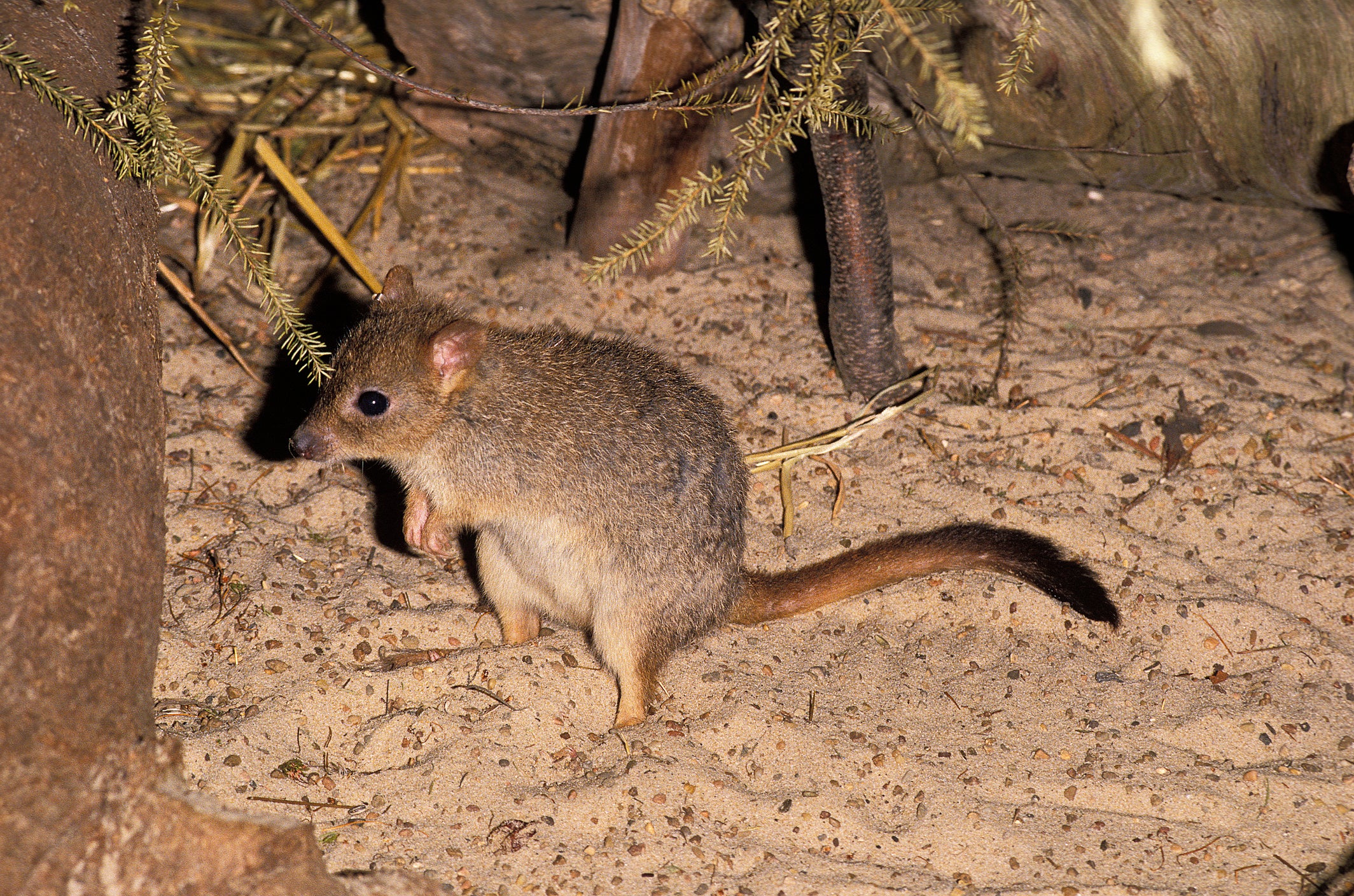Fungi-eating endangered brush-tailed bettongs reintroduced in Australian rewilding project
The marsupial credited with being an ‘ecosystem engineer’ was almost wiped out by the arrival of cats and foxes brought by Europeans
With their long springy hind legs, and rodent-shaped bodies, brush-tailed bettongs – also known as woylies – are striking-looking animals.
Evolution, in its dazzling array of unlikely formations, appears to have produced a half-rat, half-kangaroo, which leaps through the night and digs up the various kinds of fungi that comprise a key part of its diet.
However, the bush-tailed bettong is critically endangered in its native Australia, due to the ravages of the non-native animals, especially foxes and cats, brought by European settlers in the modern era.
But a major rewilding programme is bringing back these marsupials to areas where they have become locally extinct, such as mainland South Australia, where the last woylie was seen over a century ago.
Rangers released 28 females and 12 males into Dhilba Guuranda-Innes National Park on the Yorke Peninsula in South Australia last week after being brought from an abundant population of more than 1,500 on Wedge Island – over a thousand miles away.
Federal environment minister Sussan Ley said the pilot release was the first step in rewilding a number of native species across the southern Yorke Peninsula, according to Australia’s ABC News.
“More than a century ago, they (the bettongs) were wiped out locally by feral predators and their return is a major step in rewilding research and of enormous significance to the local Narungga community.”

Most of the animals moved to the Yorke Peninsula have been fitted with radio tracking collars so they can be monitored by a research team at the University of Adelaide.
“We know that they are surviving and we also know if there’s any deaths in the populations, so we can go and look at those animals and find out what’s happened if that occurs,” Dr Liberty Olds, from Zoos SA told ABC Radio Adelaide.
“A lot of work goes in beforehand to look at that habitat and choose the sites where we know there’s going to be reliable food sources and shelter for them,” Dr Olds said.
Truffles and other underground fungi are the woylies’ main foods, and they use their strong front claws to dig them up out of the ground, in the process moving several tonnes of soil each year.
This process means they spread fungal spores, making the animals important “ecosystem engineers”, helping improve the health of soils.
So far, the 40 new bettongs appear to be enjoying their new environment on the Yorke Peninsula.
Talking to The New Scientist, Derek Sandow, from the South Australian government’s Northern and Yorke Landscape Board, said: “They seem to have settled in quite well – some are already dispersing from the release site.”
Join our commenting forum
Join thought-provoking conversations, follow other Independent readers and see their replies
Comments
Bookmark popover
Removed from bookmarks